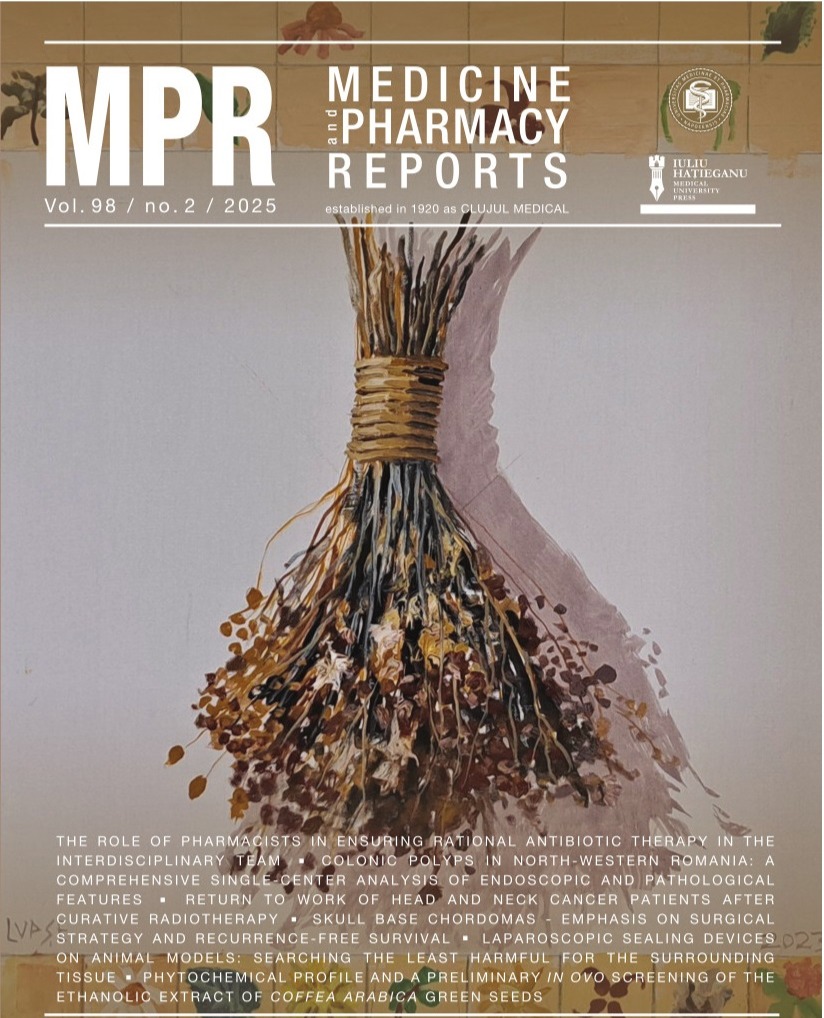Evolution of metabolic disorders after resection of pheochromocytomas and paragangliomas: a single-center study
DOI:
https://doi.org/10.15386/mpr-2741Keywords:
pheochromocytoma, metabolic diseases, diabetes mellitus, catecholamines, basal metabolismAbstract
Background and aims. Pheochromocytomas and paragangliomas are rare neuroendocrine tumors, responsible for inappropriate secretion of catecholamines, inducing metabolic disorders, increasing basal metabolic rate. Our study aimed to analyze the metabolic profile pre- and post-operatively in patients undergoing surgery for pheochromocytomas and paragangliomas and additionally to determine the predictive factors of metabolic remission.
Methods. This was a retrospective, unicentric, descriptive, and analytical study with a duration of 9 years. It includes data from 35 patients followed up for pheochromocytoma or paraganglioma in the Endocrinology-Diabetology and Nutrition Department of a University Hospital Center. All patients underwent surgery for pheochromocytoma or paraganglioma.
Results. Among the 35 patients, 51.4% of the patients with pheochromocytomas had diabetes mellitus, and 42.8% had dyslipidemia. We found that high levels of catecholamines were associated with the onset of diabetes. We also noted that patients with a long history of the disease were statistically at greater risk of developing dyslipidemia. After surgery, the body mass index of our patients had statistically increased, and 50% of patients experienced resolution or improvement of their diabetes. Improvement of dyslipidemia was observed in 53% of patients. We also found that the percentage of dyslipidemia was higher in patients who did not resolve their diabetes.
Conclusion. Diabetes mellitus and dyslipidemia are metabolic complications that must be investigated in patients with pheochromocytoma. Post-operative monitoring of body mass index and changes in glycemic and lipid levels is essential to adapt therapeutic management.
Downloads
Published
How to Cite
Issue
Section
License
The authors are required to transfer the copyright of the published paper to the journal. This is done by agreeing to sign the Copyright Assignment Form. Whenever the case, authors are also required to send permissions to reproduce material (such as illustrations) from the copyright holder.

The papers published in the journal are licensed under a Creative Commons Attribution-NonCommercial-NoDerivatives 4.0 International License.

